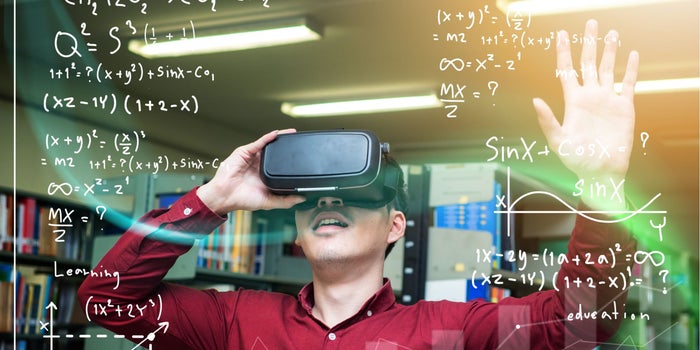Frontlist | How local innovations are bridging education's digital divide
Frontlist | How local innovations are bridging education's digital divideon Nov 25, 2020

- Low levels of access to the internet and the right devices means digital education has not been an option for large swathes of rural India.
- Many children from disadvantages backgrounds may never return to school even after they reopen, with child labour also at risk of increasing.
- Local, tech-free innovations are stepping in to enable teaching to reach children where the internet cannot.
In March this year, 270 million Indian children were forced to stop going to school because of the pandemic. The sudden move into distance mode has offered insights into the opportunities and limitations of digital modes of instruction.
A five-state study by Oxfam India offers insights into the hits and misses of school education delivery during the pandemic in the world’s second-most populous country.
It found that, despite announcements by state governments of continuing to deliver classes during the lockdown through TV and online, over 80% of parents in government schools were concerned that education had not been delivered.
The situation was not much better in private schools, with 60% reporting that education delivery was interrupted in the same period.
Pre-existing digital access says it all
These findings are unsurprising in light of the fact that 15% of households have access to the internet in rural India; a figure that is even lower for marginalised social groups. Access to digital devices is also gender biased: just 29% of India’s internet users are women.
According to Oxfam’s status report, over half the parents asked found internet speed and signal to be an issue while a third said data was too expensive. This is compounded by challenges such as not having the right device or being unable to navigate the software. Overall, more than 80% of parents faced challenges in supporting their children accessing digital education.
While children face issues in accessing education digitally, teachers face their own set of issues in delivering it. A staggering 84% of teachers reported difficulties, and two out of every five lacked the necessary devices.
There is a startling lack of teacher preparedness, too, with fewer than 20% of teachers reported receiving guidance on delivering education digitally. (The data was collected in the month of June and this number might have increased marginally since.)
Interestingly, these findings are on a par with the United States where the 2017 National Assessment of Educational Progress (NAEP) found that fewer than 20% of teachers are proficient in using computers for instruction.
WhatsApp dominant mode of delivery
The preferred mode of education delivery was WhatsApp, which was used in 75% and 57% of government and private schools, respectively. Only a fifth of the children in private schools reported attending online classes, with the vast majority simply receiving instructions via WhatsApp, YouTube and phone calls. In government schools, no one attended online classes.
In contrast to countries in the Global North where technology was used to facilitate online classes — achieving, arguably, a more structured form of education delivery — the dominant use of WhatsApp in India shows that technology was used primarily for the dissemination of information.
Despite only a fraction of private schools actually ‘teaching’ during the pandemic, with the rest focussing on information dissemination, close to 40% of schools hiked their fees amidst the largest economic crisis seen in a decade.
The social divide compounding the digital one
It is estimated that children from disadvantaged backgrounds will lose almost 40% of their previous year’s learning and if preventive measures are not taken, many of them might never return to school even after they reopen. Girls from disadvantaged families could lose 50% of their total years of education.
While some good examples of the use of technology for education have emerged, school education as a whole is not ready to move online
—Ankit Vyas
There are also concerns that prolonged school closures will lead to an escalation of child labour, particularly amongst the most marginalised social groups. A report by the ILO and UNICEF estimates that a 1% increase in poverty leads to a 0.7% rise in child labour.
Currently, the completion rate of upper secondary schooling in India for children in the richest quartile is close to 80% while for the poorest quartile, it is less than 15%. The lack of access to education for the poorest quartile will only further exacerbate the divide.
So, what can be done?
While the situation appears bleak, local, tech-free innovations have been successfully helping children access education during the prolonged school closure, and offer cause for hope.
Chhattisgarh, a state in Central India, has begun Mohalla (neighbourhood) classes in areas with low infection rates. Mini classrooms, with small groups of students, have been set up in community spaces. The teacher spends a couple of hours in each room, engaging with all students at least twice a week.
The use of Mohalla classes has been listed as a best practice by India’s Ministry of Education in its report on education during COVID-19.
A survey revealed that 68% of parents needed textbooks to facilitate classes. In response, in the Union territory of Dadra and Nagar Haveli, teachers prepared workbooks for students containing additional learning materials and solved examples to guide students. They were delivered to students’ homes by the administration, facilitating learning for the vast majority of those who did not have access to avenues for digital education.
Another innovative approach was implemented by a Head and teachers in Dumarthar, a remote tribal village in Jharkhand. With paltry access to digital devices, they came up with the idea of converting the village into an open classroom, converting walls of mud-baked houses into individual blackboards for every student, whilst maintaining physical distancing. The teachers move around the village, helping students solve problems on their blackboard.
As the goal of improving outcomes in education remains on pause, the objective of these practices is to help students remain connected with education and support a gradual transition to the reopening of schools.
While some good examples of the use of technology for education have emerged, school education as a whole is not ready to move online — not in India nor globally speaking. Pushing everyone online while knowing that doing so excludes the most marginalised children puts the education of a generation at risk.
If we are to help children remain connected with education during this difficult time, we must encourage local, tech-free innovations that can fulfil the basic needs.
book news
Coronavirus
Covid-19
Digital Education In India News
Education News
Frontlist Article
Frontlist Book News
Frontlist education News
Frontlist India news
Google news
HRD minister
HRD Ministry
Publishers
Publishing
Technical Innovation In India News Frontlist



.jpg)






.jpg)

.jpg)

.jpg)
.jpg)
.jpg)
.jpg)

.jpg)










Sorry! No comment found for this post.